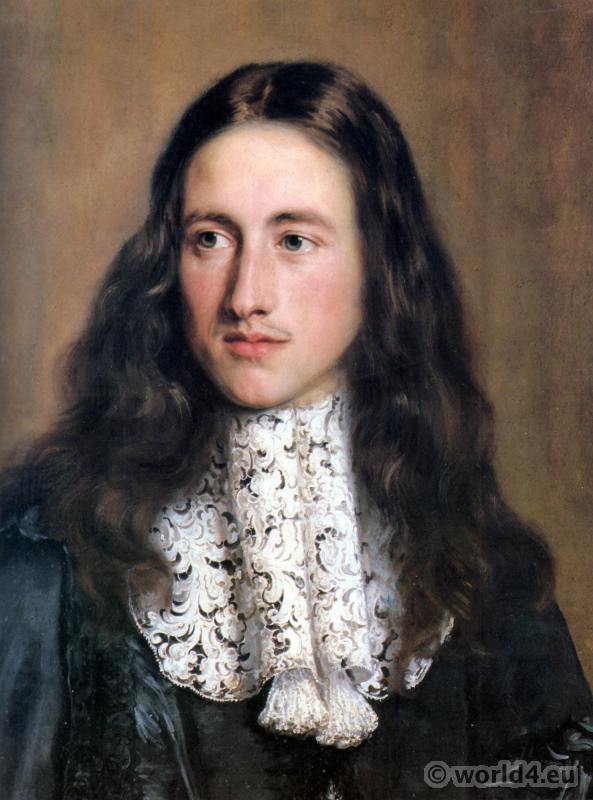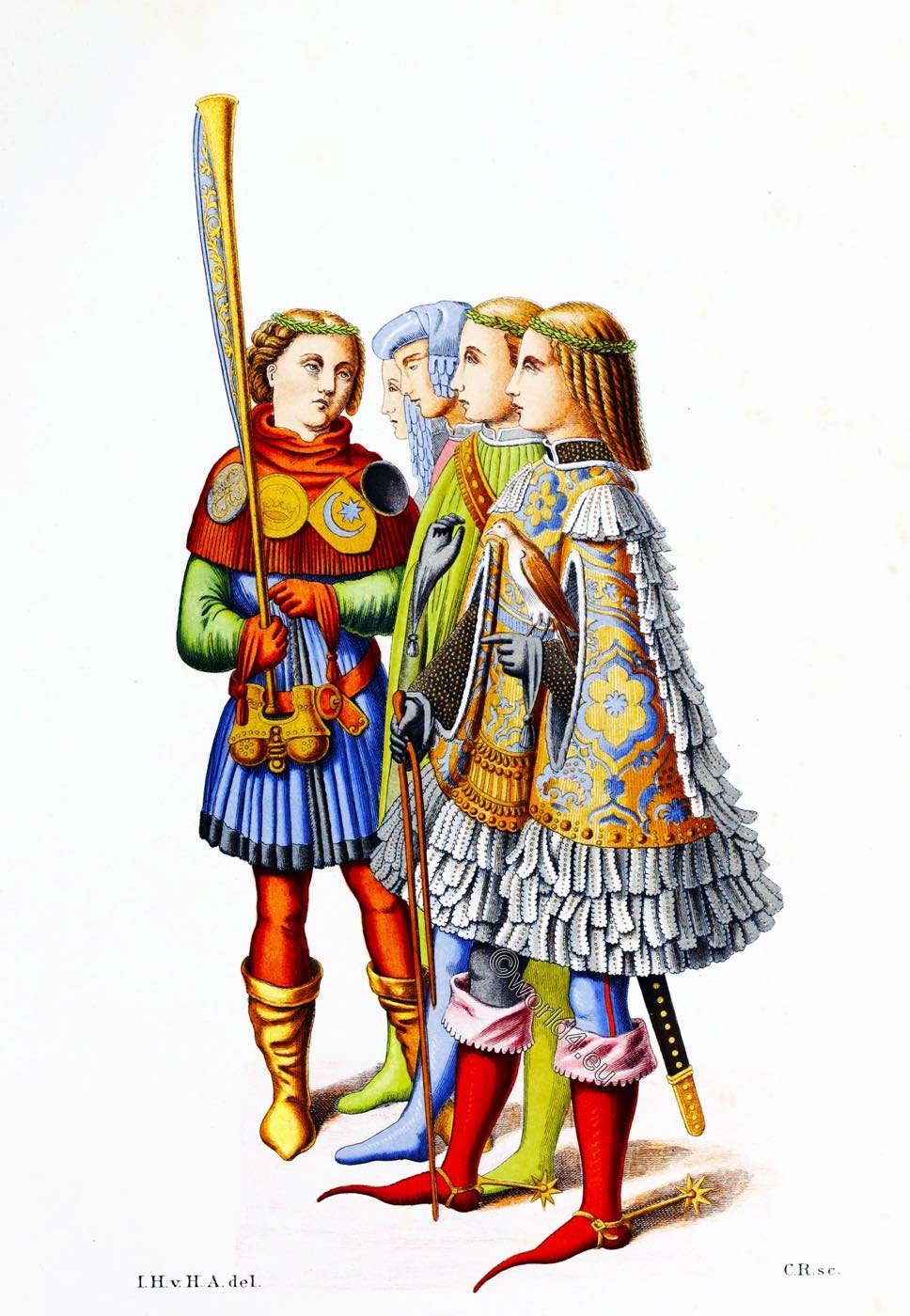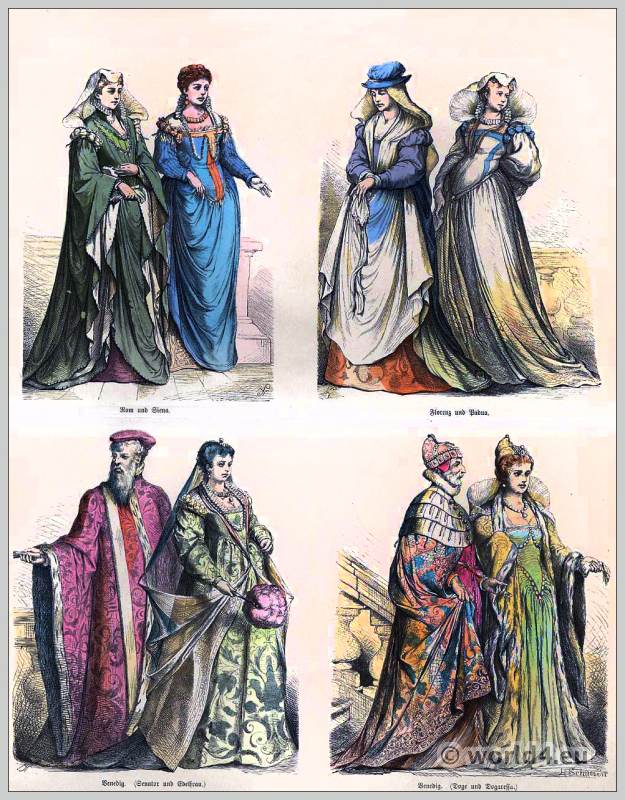Italy. Fashion, – Costume, – Culture, – History, 14th and 15th century.
Renaissance (borrowed from French renaissance “rebirth”) describes the European cultural epoch in the period of upheaval from the Middle Ages to modern times in the 15th and 16th centuries. It was characterized by the effort to revive the cultural achievements of Greek and Roman antiquity. Starting from the cities of northern Italy, the artists and scholars of the Renaissance, with their innovative painting, architecture, sculpture, literature and philosophy, also influenced the countries north of the Alps, albeit in different ways. The term “Renaissance” was first mentioned in the 19th century.
In art history, the 15th (quattrocento) and 16th century (cinquecento) are considered the core period of the Renaissance. The late Renaissance is also known as Mannerism. The end of the epoch takes place at the beginning of the 17th century in Italy through the newly emerging style of the Baroque.
Outside of Italy, Gothic forms continued to dominate for a long time; the transitions here are fluid and their assessment depends on whether a narrower stylistic concept of the Renaissance is used or a broader concept of the period. In Protestant Northern Europe, the concept of the Renaissance is overlaid by that of the Reformation.
As artists of the Renaissance, Italians such as Alberti, Donatello, Botticelli, Leonardo da Vinci, Bramante, Raphael, Michelangelo and Titian are particularly well known. This epoch also includes important writers from Dante Alighieri to William Shakespeare. The state philosopher Niccolò Machiavelli is considered as an analyst and representative of a self-confident power politics. Erasmus of Rotterdam, in turn, stands for morality and self-reflection. In music, the epoch is associated above all with increased polyphony and new harmony, as in Orlando di Lasso.




